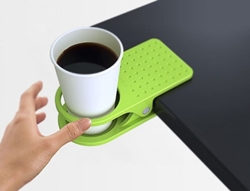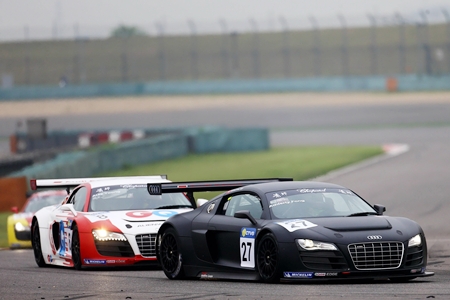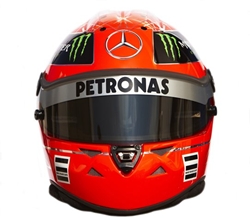 |
|
 |
| AUTO MANIA:
by Dr. Iain Corness |
|
|
|

Spanish GP this weekend
Twelve months ago I wrote about the Spanish GP at
Catalunya in this column stating, “The Alonso fans will be out in full
voice, hoping that this will be the GP at which Ferrari comes on even
stronger, and the Spaniard fulfills all their dreams, even if Massa was
dragging the chain two weeks ago.” It would appear that despite four
different winners in four races, in the Ferrari garage, it is much of the
same as 12 months ago. One interesting rumor has Webber going to Ferrari for
2013 to replace the underperforming Massa, and his Red Bull seat being taken
by Ricciardo from Toro Rosso. We shall see.
Back to the GP. Spain has a long history in GP racing,
and the Catalunya circuit (aka Montmelo) was built just 20 km from
Barcelona. It was actually the fourth circuit in, or near, Barcelona, which
has some claim to being Spain’s capital of motor racing.
The 5 km Circuit Catalunya was opened in 1991. A
temporary chicane was built at ‘Nissan’ (a very shallow curve) in 1994, but
for 1995, ‘Nissan’ was straightened reducing the length of a lap to the 5 km
length.
I will be watching the dedicated F1 channel in front of
the new huge screen in Jameson’s Irish Pub (Soi AR, next to Nova Park). The
race will start at 7 p.m. but I will get there early and have some dinner
from the Jameson’s specials menu. Why not join me for dinner and a beer
before the race?
Last year I posed the following questions, “…can Vettel
grab another win before the others catch up? Will McLaren find more speed
and challenge? Will Mercedes get Rosberg up on the podium and forget
Schumacher? We will know by Sunday night.” Seems nothing at all has changed!
|
|
 |
The age of self-deploying
cup-holders is here
The J.D. Power and Associates 2012 U.S. Automotive Emerging
Technologies Study has shown that vehicle owners have come to expect additional
safety features and are now turning their attention more to infotainment
technologies in their vehicle.

The attach anywhere cup holder.
The study measured vehicle owner interest and purchase intent
for emerging automotive technologies, with the clever rider that the interest
was taken both before and after market price was revealed.
The top-five considered technologies, based on vehicle owners
who indicated that they “definitely” or “probably” would purchase in their next
vehicle, both pre-price and at market price were:
I am sure multiple cup-holders would have come a close sixth,
as purchase interest fell across all features when the price was introduced.
According to Mike VanNieuwkuyk, executive director of global
automotive at J.D. Power and Associates, “While vehicle owners remain very
interested in technologies that make their vehicle safer, they are turning their
attention more and more toward features and technologies that allow them to be
productive, connected and entertained while in their vehicles. Given the variety
of interests from consumers, automakers will be challenged to pursue
technologies that fit their consumer’s interests in order to attract them to
their products.”
You have been warned, the self-deploying cup-holder is almost
here!
| Pre-Price Feature |
Interest |
| Light emitting diode (LED) headlights |
70% |
| Natural language voice-activation |
69% |
| Next-generation heads-up display |
69% |
| Wireless connectivity system |
68% |
| Remote vehicle diagnostics |
65% |
| However, when the price was revealed the
interest changed: |
| HD radio (at $100) |
52% |
| Collision mitigation system (at $750) |
46% |
| Wireless connectivity system (at $300) |
45% |
| Surround-view rear-vision camera (at $550) |
44% |
| Personal assistance safety services, $15pcm |
41% |
|

|
Thai Auto Book 2012 predicts a good auto year
The best and most authoritative e-publication available on
the Thai auto industry is the Thai Auto Book 2012 (thaiautobook. blogspot.com)
compiled by the Automotive Focus Group president Uli Kaiser.
The statistics on the Auto Alliance plant are interesting,
with the combined plant having the capacity of 195,000 units (pick-ups) and
100,000 cars. Forward bookings for the new Ford Ranger are 16,500 and 13,500 for
the Mazda BT-50.
Saudi Arabia is also an interesting market for Thai made
vehicles. According to Thai Automotive Institute, approximately 20 percent of
Thai car exports go to the Middle East. Thailand exported about 750,000 cars in
2011 and 20 percent of that is 150,000. Saudi Arabia recorded sales of about
550,000 vehicles in 2011 - so roughly every third car sold in Saudi Arabia is
made in Thailand. The popular makes are Toyota (41 percent and 230,000
vehicles), Hyundai (19 percent) and Ford (eight percent).
Hyundai are certainly on a roll. Now 5th
largest automaker it is showing double digit growth in Europe, where the overall
market is in decline. One reason is their quality, regularly out-performing the
better known brands in the quality stakes.
Add those predictions to the news from David Nardone (CEO
Hemaraj) that they have revised their land sales and ready-made factories
figures upwards for 2012, with the bulk of the purchasers being involved in the
auto industry.
Provided the manufacturers here can find (and keep) skilled
labor, it would seem that the Eastern Seaboard is in for a record year.
|

|
Autotrivia Quiz
Last week I informed you that in 1912 a manufacturer built
cars alongside domestic appliances. I asked what was the manufacturer and how
many did they build? In 1912, Miele & Cie. was among the many manufacturers
trying to get a share of the emerging market for automobiles. The company made
passenger cars with two and four seats, limousines, and pick-up trucks,
manufacturing 125 vehicles before this business venture was finally abandoned.
However, that was not the end of Miele & Cie.’s activities in the automotive
arena. In 1924, the company began making bicycles, followed by a model with a
supplemental electric motor in 1933. In the same year, Miele & Cie. introduced
its first motorcycle. This too was abandoned and Miele restricts itself these
days to white goods.
So to this week. What car does the cartoon character Granny drive in the
Sylvester and Tweety Mysteries? Clue: ask your children under 10 years of age!
For the Automania free beer this week, be the first correct answer to email
[email protected]
|

|
Audi copy Porsche in Asia

Audi Series racing.
The very successful Porsche Asia Cup series has been joined
by Audi with there “me too” series in Asia. One of the top drivers attracted to
the new series is Malaysia’s Alex Yoong, scoring the top step on the podium in
his first race in China.
Rene Koneberg (director of Audi Sport customer racing China)
said, “We set out to raise the bar on standards of motorsport in Asia, and our
fantastic field of drivers, and fleet of superb Audi R8 LMS Cup cars, have done
just that. We could not have hoped for a more exciting first weekend of Audi
one-make racing, and for us to debut here in China makes it all the more
special. The enthusiasm with which the Audi R8 LMS Cup has been received by the
motorsport fraternity has been extraordinary, and we have no doubt we will go
from strength to strength this season.”
|

|
The development of the brain bucket
Safety helmets have been shown to reduce road fatalities. A
quick ‘Google’ returned, “Motorcyclists are at high risk in traffic crashes. A
2008 systematic review examined studies on motorcycle riders who had crashed and
looked at helmet use as an intervention. The review concluded that helmets
reduce the risk of head injury by around 69 percent and death by around 42
percent.” These are statistics happily ignored by most of Thailand’s motorcycle
riders, unfortunately. Helmet use at Songkran would halve the annual fatality
figures.

Guess whose helmet.
The ultimate helmets are worn by F1 drivers, as the highest
potential for injury lies there. Although its fundamental shape may look very
similar to those worn by drivers in the 1980s and even the 1970s, the underlying
design and construction technology has changed radically over the years.
In 1985 a typical F1 helmet weighed around 2 kg. That amount
increased dramatically under high-G cornering or deceleration, adding to the
risk of ‘whiplash’ type injuries in big accidents. As head and neck trauma has
been identified as the greatest single risk of injury to race drivers, helmet
manufacturers place the greatest importance on reducing the mass of helmets,
while increasing their strength and resistance to impacts.
Current F1 helmets are massively strong, and also
considerably lighter, now weighing approximately 1.25 kg. Helmets are
constructed from several separate layers, offering a combination of strength and
flexibility (vital to absorb the force of large impacts). The outer shell has
two layers, typically fiber-reinforced resin over carbon fiber. Under that comes
a layer formed of vastly strong plastic, the same material used in many
bullet-proof vests. Then there is a softer, deformable layer made from a plastic
based on polystyrene, covered with the flame-proof material used in racing
overalls and gloves.
The visor will be made of a special clear polycarbonate,
combining excellent impact protection with flame resistance and excellent
visibility. Most drivers use tinted visors, the insides of which are coated with
anti-fogging chemicals to prevent them misting up, particularly in wet
conditions.
In recent seasons the actual shape of helmets has gradually
evolved, as more aerodynamically efficient shapes are brought into use. Sitting
directly below the main engine air intake, helmets are increasingly shaped to
assist in the process of reducing drag in this notoriously high-turbulence
aerodynamic area. The modern designs also reduce the lift produced by more
traditionally shaped helmets - which can be anything up to 15 kg at racing
speeds.
The helmet design must also provide ventilation for the
driver. This is achieved through the use of various small air intakes, though in
tropical Thailand I have never found they work too well.
As you would expect, the FIA have strict ‘super helmet’
requirements for F1 racing. To gain approval for Grand Prix use, a helmet design
must pass a number of tests, covering factors such as crush and penetration
resistance and surface friction. It must also work correctly in conjunction with
the mandatory HANS (Head and Neck Support) device.
Top helmets here will set you back around 30,000 baht, but
there are cheaper models available from good manufacturers.
|

|
|
|
 |
|
 |

